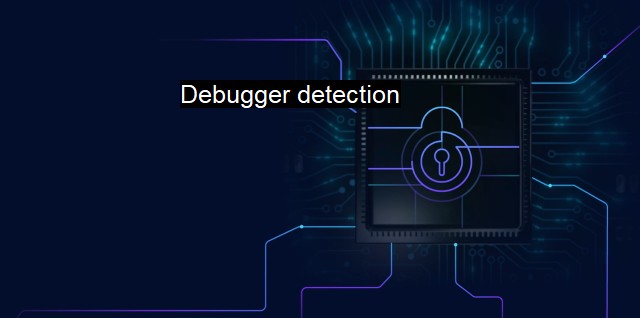What is Debugger detection?
Detecting Debuggers: Understanding Debugger Detection in Cybersecurity and Antivirus
Debugger detection refers to a variety of techniques used mainly by software developers and cybersecurity professionals to determine whether a program is running within the environment of a debugger. A debugger is a computer program that is used to test and debug other programs (the "target" program). Debuggers play a key role in software development processes however they also have potential negative implications particularly in the realm of cybersecurity and the functioning of antiviruses.A software debugger examines another software application, allows alteration of program state, and flexibly changes the runtime behavior of the monitored program. Such omnipotent control over a target program only spells trouble if misuse happens. In the cybersecurity realm, debuggers are typically feared due to their use by adversaries in reverse-engineering attempts, vulnerability discovery endeavors, or software exploitation efforts. Consequently, many programs include built-in functionality to thwart debuggers such approaches were mainly directed towards illegal software modifications prevention, therefore the technique of debugger detection came into existence.
The primary purpose of debugger detection is to secure software applications from malicious elements that may attempt to invade, manipulate, or misuse the application. By implementing a means to identify whether an application is running within a debugger, appropriate protective measures can be taken. This can range from simply exiting the program to avoid any further interference, disguising the operations of the program to mislead the attacker, to alerting the system administrator about the attempt to debug the application.
The main reason for debuggers being detectors is software preservation, where these techniques ensure copyrighted and proprietary software from being pirated or reverse-engineered. It is commonly embraced by software sellers and gaming industries to constrain cheating and unlawful operations.
Still debugger detection benefits extend far beyond preservation. Viruses, too, have keenly adopted debugger detection techniques. Malware often any debugger present to complicate its unknotting by security wannabes. Debugger detection is simultaneously a creative partner to antivirus camouflage. These can take relatively variant approaches that essentially achieve an added layer of stealth. Such viruses can identify supervised operation using a variety of detectors.
Timing detection leverages the fact that the instruction and execution flow is significantly slower when running within a debugger since each instruction, operation, or system call may be analyzed in detail by the practitioner. Another, block input/output operations detection technique identifies the debugging process by the potency to interrupt and seize any command to the point of operation it controls.
Indeed, debugger detection is a double-edged sword because similar techniques are adopted by both genuine product developers for defense, as well as malware developers for offense. For genuine product developers, it is a lifesaver, while malware developers utilize debugger detection to their advantage as a source of hiding.
Another function of the antivirus is to occasionally employ debugger techniques for potentially malicious software to examine and decide whether it is, indeed, harmful before it runs and influences a protected system. Ergo, not all debuggers are harmful, some are beneficial and effectively employed by antivirus applications.
Debugger detection plays an ingenious role in the intensively interconnected realms of cybersecurity and antivirus software. The ability of certain programs to perceive their status of being debugged is an imperative element of contemporary cybersecurity approaches and measures. While the battle continues between adversaries on one side attempting to evade, expose and venture any vulnerability present within a system, and antivirus developers that strive continuously to remain one step ahead in identifying and eradicating threats, debugger detection remains a key player in this high-stakes game of digital cat and mouse.

Debugger detection FAQs
What is Debugger Detection?
Debugger Detection is a method used in cybersecurity to detect whether a debugger (a software tool used to debug code) is being used to analyze or reverse engineer a program.Why is Debugger Detection important in cybersecurity?
Debugger Detection is an important tool in cybersecurity as it helps to prevent unauthorized access to a system or application by detecting the presence of a debugger that may be used to exploit vulnerabilities in the code.How does Debugger Detection work?
Debugger Detection works by embedding code checks into the application being protected. These checks monitor the program's behavior and identify whether it's being executed under a debugger environment. If the checks detect such an environment, the program may take defensive measures such as shutting down, generating alerts, or even modifying its behavior to prevent analysis.What are some common Debugger Detection techniques?
Debugger Detection techniques can vary depending on the specific cybersecurity tool being used. Some common techniques include code obfuscation, encrypted code sections, and dynamic memory allocation. Other techniques may include the use of system APIs, memory breakpoints, and stack probing, among others.| | A | | | B | | | C | | | D | | | E | | | F | | | G | | | H | | | I | | | J | | | K | | | L | | | M | |
| | N | | | O | | | P | | | Q | | | R | | | S | | | T | | | U | | | V | | | W | | | X | | | Y | | | Z | |
| | 1 | | | 2 | | | 3 | | | 4 | | | 7 | | | 8 | | |||||||